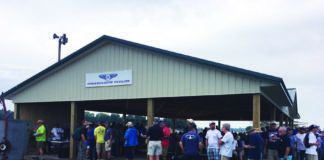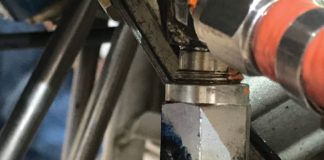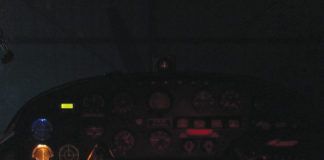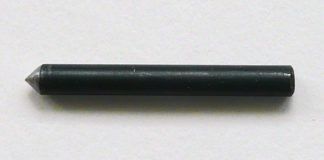Fuel Flow Tests
All the engineers here at the Light Aircraft Association HQ in the UK enjoy reading Kitplanes® magazine. However, I was motivated to write to you when we spotted a potentially misleading photograph in your March 2013 issue on page 2. The photo shows a fuel-flow check being carried out, and explains that the nose-up angle at which the aircraft is being supported is as described in AC 90-89A. There is an error in this set-up: The fuel outlet pipe has been bent downwards and is significantly lower than the carburetor inlet. This would result in an inaccurately high fuel-flow result, due to the increased head of fuel. For a fuel system that has a minimal head of fuel above the carburetor inlet, holding the fuel outlet lower than it should be might give the impression that fuel flow is adequate, whereas with the outlet pipe at carburetor inlet height, there may be no fuel flow at all.
Andy Draper
Author Dave Prizio responds: Now that I look at it, the fuel line exit in the photo is a bit too low. As per AC 90-89A, it should be at the exact same level as the carburetor.
In my defense, although the fuel line exit is about 8 inches too low, the increase in pressure is less than .02 psi. If the fuel flow had been marginal, this might have been a concern; but in this case it was not.
Kudos for the Dawn Patrol
I enjoyed your recent article about why people fly WW I replica aircraft. Everyone enjoys seeing these warbirds; they are non-threatening and riddled with nostalgia. You and your gang do a great service to every community you visit; your reputation precedes you and the spectators are not disappointed in your performances (and screw-ups). What an amazing opportunity for some of the aged war heroes to sit in your planes and share their memories.
David Halmos
Manufacturers Repair Too
I just finished reading your “Repair or Replace” article in the May issue. I obtained my A&E in 1949 and the article triggered my memory of several memorable salvage events that occurred during my 63 years in aviation.
I worked at Douglas Aircraft while the DC8 was on the line. Someone dropped a large Keller air drill on the wing and punched a hole into the fuel tank. The hole was between two access covers, so we had engineering add another cover between the existing covers. The customer was Japan Airlines and their inspector asked us why we added the cover; we told him it was for improved access. His comment was, “Make other wing same,” so from then on every JAL DC8 had two access panels that no other customer had.
Bill Hebestreit
Superior Power
I enjoyed reading Mr. Rozendaal’s feature on the Velocity V-Twin in your April issue. However there is one error—the engines in the airplane he flew are 160-horsepower, XP-320 Engines from Superior Air Parts. Our XP-Engines are recommended by Velocity for the V-Twin.
Glen Golden,
V.P. Sales & Marketing
Superior Air Parts, Inc.
Write to [email protected] or mail a piece of your mind to:
KITPLANES, P.O. Box 856, Friendswood, TX 77549, USA




